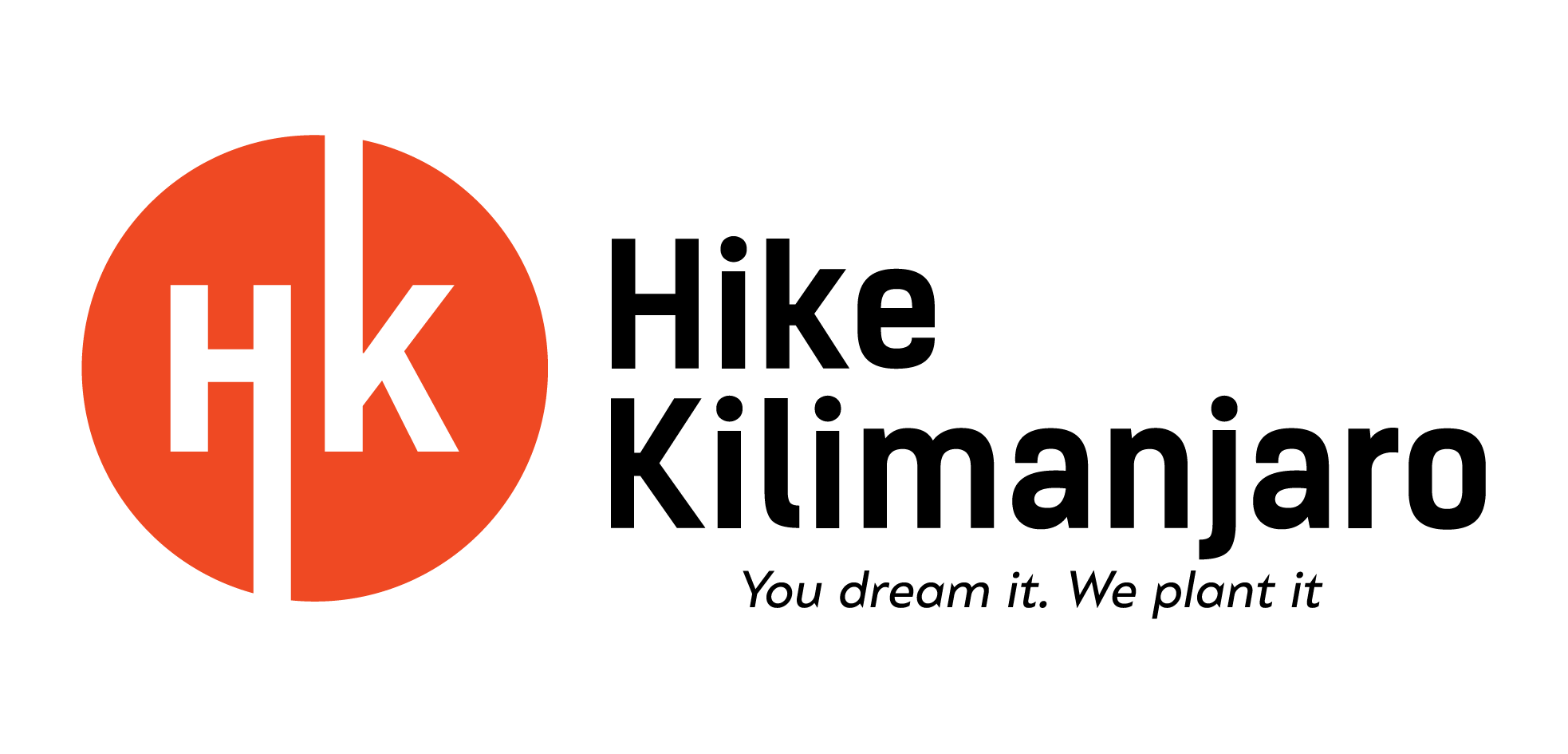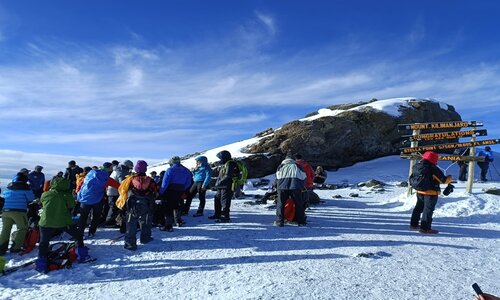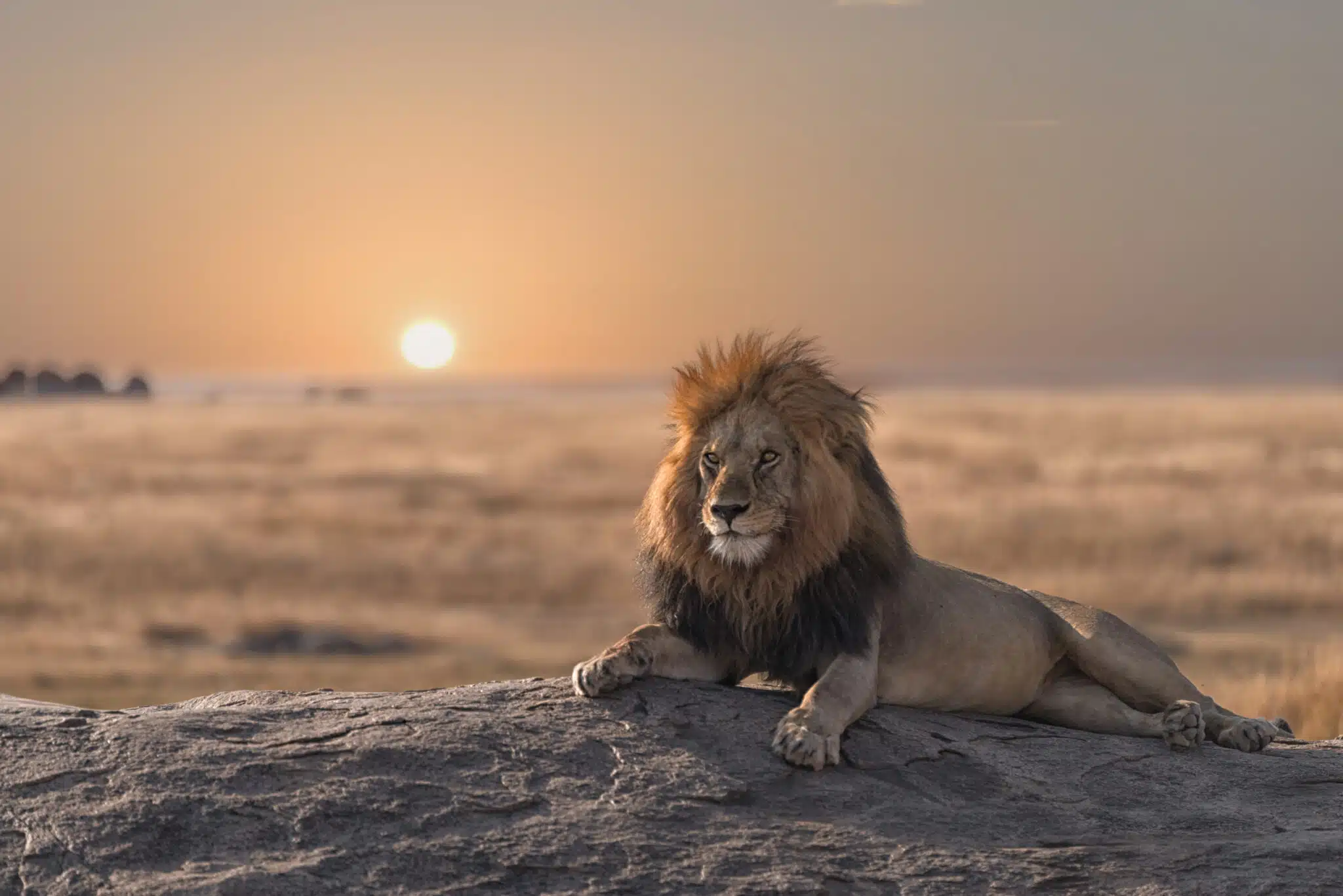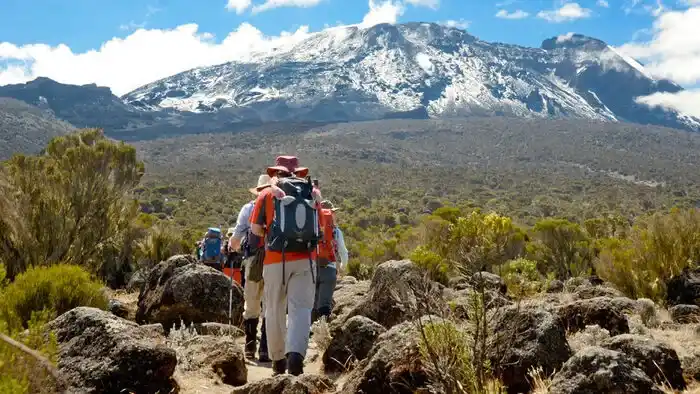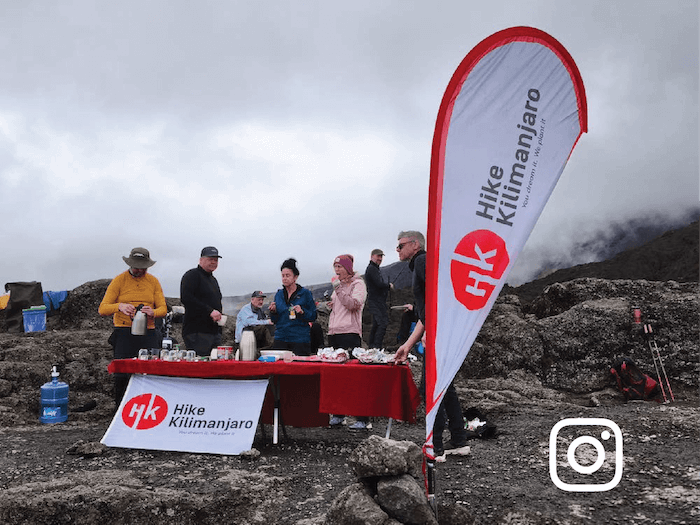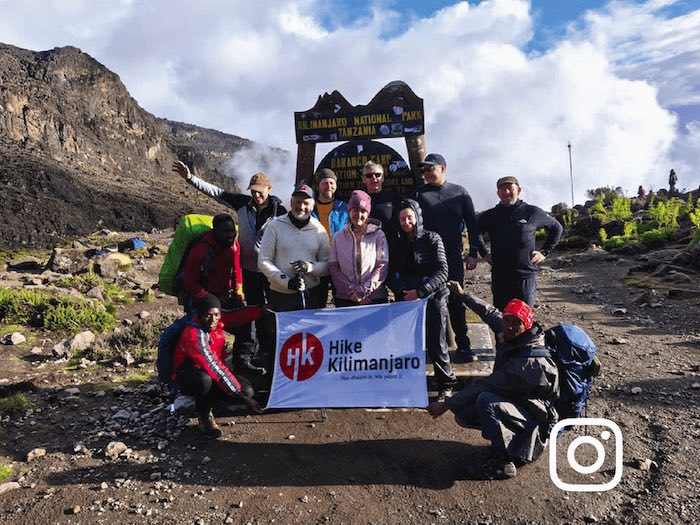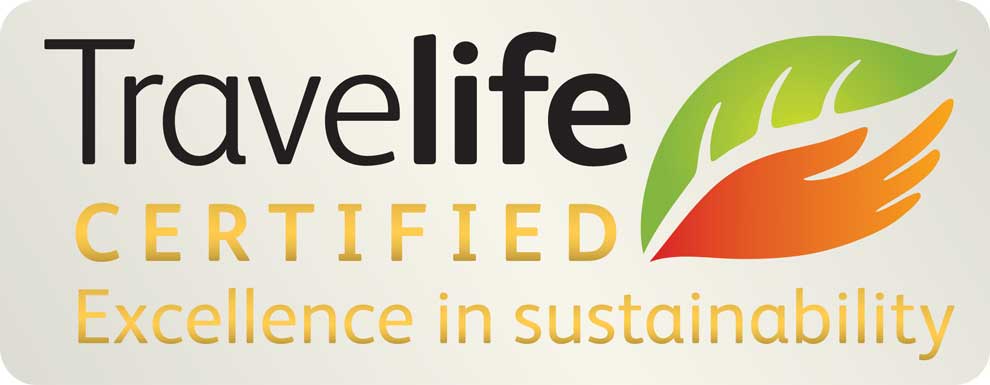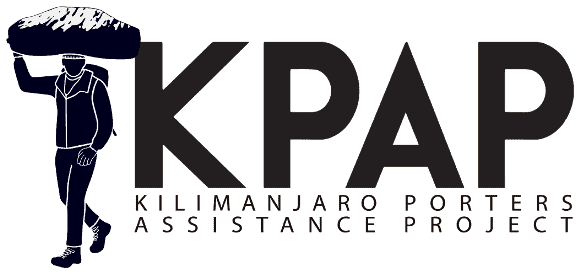Kilimanjaro Vegetation Zones | 5 Climate Zones
Discover the 5 Kilimanjaro vegetation zones from rainforest to arctic summit. Learn how each zone affects your trek and what to expect at every stage.
🌿 Kilimanjaro Vegetation Zones: Exploring Nature's Layers from Base to Summit
Mount Kilimanjaro isn’t just the highest peak in Africa, it’s a vertical ecological journey through some of the most striking and diverse environments on the planet. As you ascend from the base to the summit, you pass through five distinct vegetation zones, each with its own unique climate, flora, and wildlife. Understanding these Kilimanjaro vegetation zones is key to preparing for your trek and appreciating the natural beauty that surrounds you every step of the way.
Whether you’re climbing the Lemosho Route, Marangu Route, or Machame Route, every Kilimanjaro trekker experiences this incredible transition from lush rainforest to the alpine desert and the icy summit of Uhuru Peak.

1. 🌴 Cultivated Zone (800m–1,800m)
Also known as: The Lower Slopes
This is the area surrounding Kilimanjaro where most local communities live. Rich volcanic soil supports banana plantations, coffee farms, and other crops. As you approach the mountain, you’ll travel through villages like Marangu and Machame, passing bustling markets and terraced farms.
Key features: Farmlands, villages, tropical crops
Wildlife: Birds, butterflies, domesticated animals
Best viewed on: Arrival transfers or Cultural Day Tours
2. 🌳 Rainforest Zone (1,800m–2,800m)
This zone is dense, humid, and rich in biodiversity. It’s home to towering fig trees, ferns, and flowering plants. Rainfall is common here, making it a lush green entryway to your trek.
Key features: Thick forest, moss-covered trees, rich biodiversity
Wildlife: Colobus monkeys, blue monkeys, turacos, bushbuck
Best experienced on: Machame, Lemosho, and Rongai Route
🛈 Tip: Wear waterproof gear, this zone can be wet and muddy.
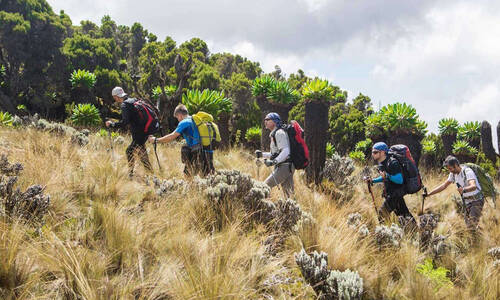
3. 🌾 Moorland Zone (2,800m–4,000m)
As you leave the forest, the landscape opens up dramatically. The air becomes thinner, the temperature cooler, and strange, giant plants like Dendrosenecio kilimanjari dominate the terrain. This surreal high-altitude zone often feels like another planet.
Key features: Rolling hills, rocky outcrops, giant groundsels and lobelias
Wildlife: Few animals, but unique alpine plants thrive
Camp examples: Shira 2 Camp, Horombo Hut
4. 🏔 Alpine Desert Zone (4,000m–5,000m)
Harsh and barren, this zone sees huge temperature swings—scorching sun by day, freezing cold at night. There’s little rainfall, vegetation is scarce, and it can feel desolate but awe-inspiring.
Key features: Volcanic rock, dust, wind, minimal plant life
Wildlife: Rare sightings, mostly insects or birds passing through
Notable areas: Barafu Camp, School Hut, Third Cave Camp
5. ❄️ Arctic Zone (5,000m–5,895m)
Welcome to the roof of Africa! This is the summit zone – icy, oxygen-thin, and truly challenging. Expect glaciers, scree slopes, and surreal sunrise views from Uhuru Peak, the highest point on Mount Kilimanjaro.
Key features: Snowfields, glaciers, low oxygen, extreme cold
Wildlife: None conditions are too extreme
Summit Points: Stella Point, Uhuru Peak
🛈 Important: This zone is where altitude sickness is most common. Acclimatization and slow ascent are critical.
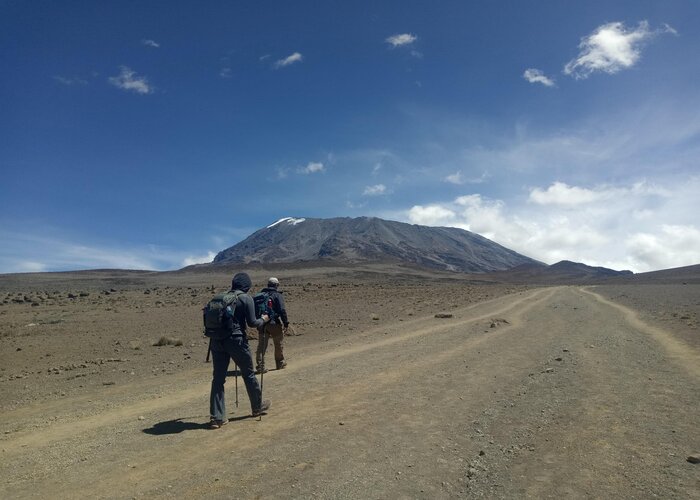
🔎 Why Do the Vegetation Zones Matter?
Understanding Kilimanjaro’s ecological layers helps you:
-
Prepare properly (gear, clothing, and layering)
-
Acclimatize better by knowing altitude effects
-
Appreciate the beauty of nature’s diversity on your journey
Each step on Kilimanjaro isn’t just about getting higher it’s about watching Earth transform in front of your eyes.
🧭 Want to Experience All 5 Zones?
Choose one of our longer itineraries, like the 8-day Lemosho Route or 9-day Northern Circuit, to give your body more time to adapt and enjoy the full scenic range Kilimanjaro has to offer
📌 Final Thoughts
Climbing Kilimanjaro is not just about the summit, it’s about the journey through these remarkable vegetation zones that make this mountain unlike any other in the world. Every step is a shift in scenery, temperature, and terrain, offering an unforgettable trekking experience.
Whether you’re planning a budget climb or a luxury expedition, Hike Kilimanjaro will guide you safely through each breathtaking zone from forest floor to glacier cap.
Share Your Article:
Make your dream trip come true with Hike Kilimanjaro .

5/5
Based on 100+ reviews

4.9
Based on 60+ reviews
Customized Travel Proposal
At Hike Kilimanjaro, you can tailor your trip to your preferences. Our sample itineraries are customizable, and our specialists work with you to create your dream trip!
Related posts
These full and frank reviews are from travelers who have traveled with Hike Kilimanjaro previously. The reviews and experiences shown here are from reputable travel websites like TripAdvisor, Google, Facebook, and Trust Pilot, etc.
EXCELLENTVerified "This 3-day luxury safari combined with a Kilimanjaro hike exceeded all my expectations. "This 3-day luxury safari combined with a Kilimanjaro hike exceeded all my expectations. The accommodations were elegant and comfortable, and the guides were knowledgeable and friendly. The safari offered incredible wildlife photography opportunities, and climbing Kilimanjaro was a true test of endurance and strength, but the stunning vistas made it all worthwhile. An exceptional journey that I will cherish forever."Posted onVerified "My entire expectations were surpassed by climbing Kilimanjaro. "My entire expectations were surpassed by climbing Kilimanjaro. When one reaches Uhuru Peak, the sensation of accomplishment is indescribable. Because of the well-planned logistics, the amiable crew, and the breathtaking environment, the entire hike was easy and fun. It is a very remarkable event that I would gladly repeat. For adventurers, it's a must.Posted onVerified Tanzania truly offers a world-class experience. "My trek up Mount Kilimanjaro in Tanzania exceeded all my expectations. The stunning scenery, from lush rainforests to icy glaciers, was awe-inspiring. The local guides and porters were incredibly supportive and professional, ensuring a safe and enjoyable climb. It was challenging but incredibly rewarding. Tanzania truly offers a world-class experience for anyone looking to conquer Africa’s highest peak."Posted onVerified I feel accomplished and thankful. Kilimanjaro climbing was satisfying and difficult at the same time. Along the way, there was breathtaking natural splendour and a variety of diverse habitats. The guiding team's assistance was outstanding and got us through some really difficult times. After completing this amazing journey, I feel accomplished and thankful.Posted onVerified Thanks to their knowledgeable advice. From beginning to end, Hike Kilimanjaro offered a smooth and well-planned trip. Their staff made sure we were at ease and ready by being helpful and considerate. Thanks to their knowledgeable advice, climbing Kilimanjaro was difficult but incredibly gratifying. They are the ones I would most certainly pick again for excursions in the future.Posted onVerified "An amazing and well-planned adventure. "An amazing and well-planned adventure! The climb was fun and safe because of the team's experience and upbeat demeanour. I was encouraged by the journey and pleased to have reached the top of Africa.Posted onVerified Highly recommended this tour agency. Wonderful experience! We had a fantastic trip and enjoyed the entire team; we always felt very protected and taken care of. Highly recommended. I want to thank Keddy in particular; you were the best mentors .Posted onVerified "My Kilimanjaro trek was an extraordinary experience. "My Kilimanjaro trek was an extraordinary experience. The route was well-organized, and the staff was attentive and encouraging throughout the climb. The sense of accomplishment upon standing on the summit was overwhelming. The scenery, the challenge, and the sense of connection with nature made this hike truly special. I highly recommend it to anyone looking for a once-in-a-lifetime adventure."Posted onVerified Well Organized and Unforgettable. Hiking Kilimanjaro with a well-run tour company was an incredible experience. The crew was courteous and made sure we were fed, acclimated, and inspired at every stage. The support from porters and guides, as well as the companionship among hikers, helped to make the difficult days bearable. It was weird to be at the top above the clouds. Undoubtedly a life-long accomplishment I will always treasure.Posted onVerified Top notch safari The customer service is on point. Drivers were there to pick us up on time. We saw all the big 5 in Serengeti /Ngorongoro Crater.The accommodation booked Embalakai had great food and staff.Couldn't have asked for a better safari experience. Top notch
Speak to an Expert
Need assistance with your booking? Our friendly Tanzania-based expert team is here to help. Feel free to reach out with any travel-related questions or concerns.

Maxon

- WhatsApp +255 692 406 444

